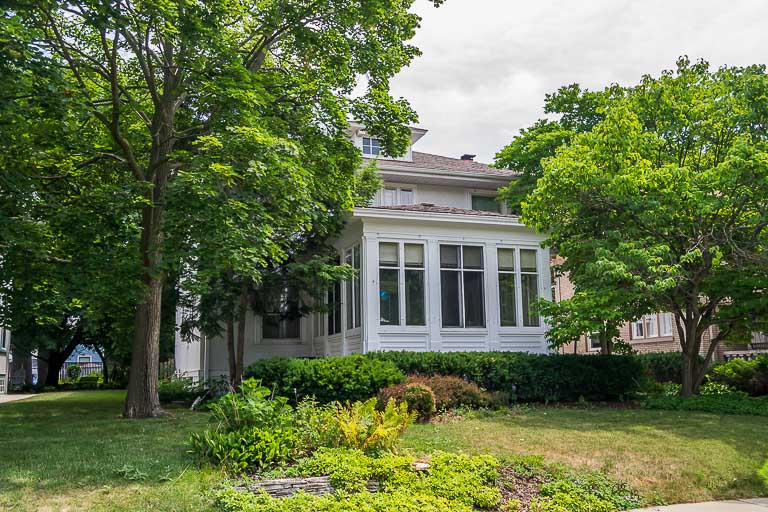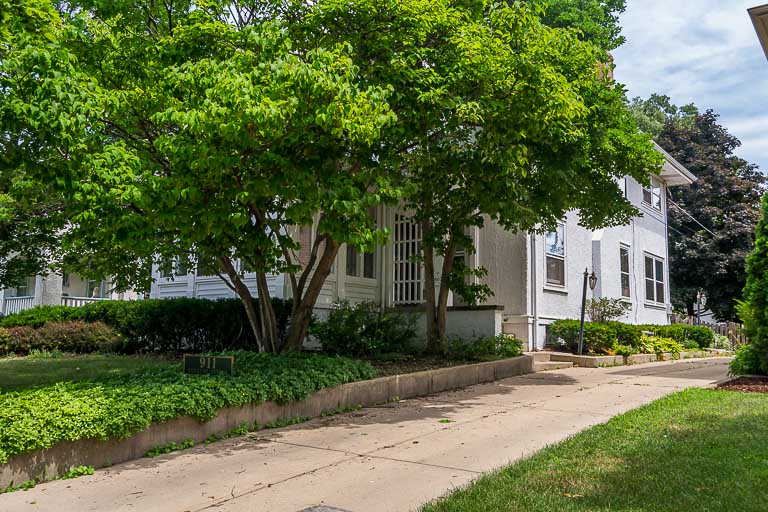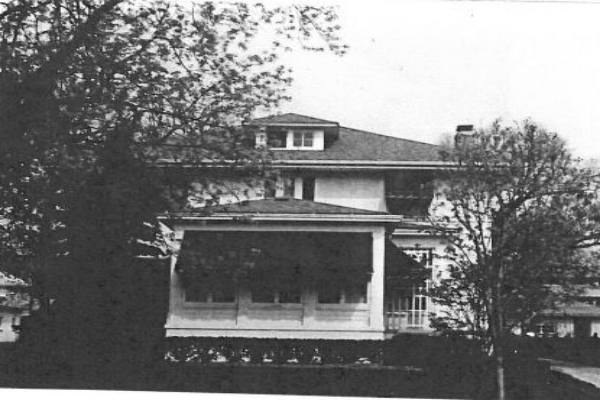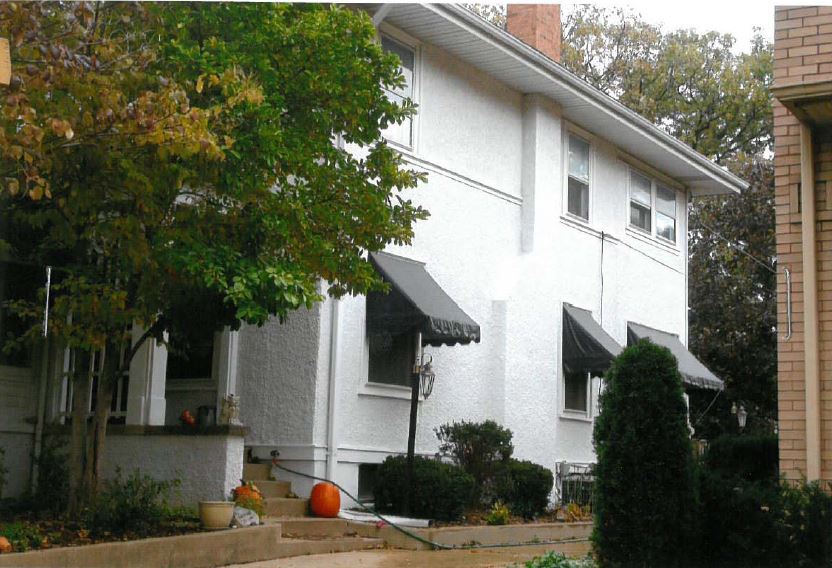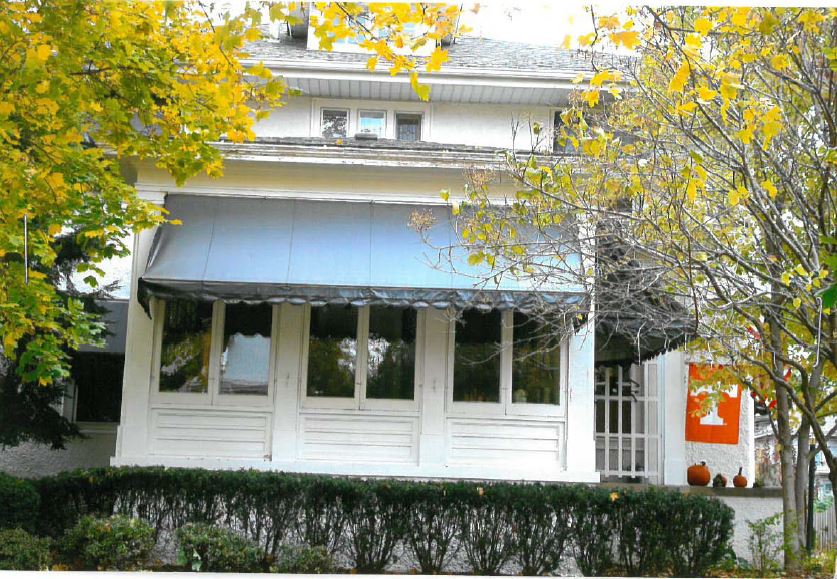911 DOUGLAS AVENUE
HISTORIC SIGNIFICANCE
Following the passing of Edward C. Lovell, the executor of his will began selling remaining lots in the Addition with lot 13 bought by Frank Taylor for $1000 in September 1907, who then took out a mortgage for $1500 in April 1908. The Elgin Daily News, December 31, 1907, published a list of construction that occurred in that year; listed was "F.H. Taylor, $4,000." The following May, Taylor sold lot 13 to Frank Norwood. The Elgin Daily News, December 9, 1908 states the following: "Mr. and Mrs. Frank Norwood are occupying the residence built by Frank Taylor on upper Douglas Avenue and which was purchased by them shortly after it was finished."
The Norwoods were close friends of Edward Cutter, son of H.W.K. Cutter, the owner of the Cutter and Crossette shirt factory and a Chicago resident. Edward Cutter and his wife Elizabeth Fisk Cutter built their house across the street from Norwood at 912 Douglas in 1908.
Frank Norwood was an Irish immigrant. In 1906, he was the assistant superintendent of the Cutter and Crossette Shirt Factory, otherwise known as the Elgin Shirt Factory, and had been living at 926 Logan Avenue with his wife Blanche. By 1908, Frank Norwood had been promoted to superintendent of the shirt factory. Frank and Blanche Norwood had three sons; Donald served in the Army in WWI, Eugene served in the Army in WWII, and Frank, Jr. distinguished himself by becoming a Colonel in the Air Force in WWII.
Frank, Sr. was ill with Bright's Disease and together with Blanche and their children, moved to Oakland, California for health reasons in 1911. He was superintendent of a women's apparel manufacturing company in Oakland. Less than a year after the move to California, Frank Norwood, Sr. died of Bright's Disease at the age of 41. Blanche Norwood moved to Pasadena, California where she joined many Elginites at the "Elgin Colony," a group of resettled Elgin residents. She remarried and became Blanche Norwood Shoaf. Among her many friends, Blanche included Bertha Watts.
George B. Watts came to Elgin by way of Philadelphia, Pennsylvania where he grew up and was educated. He came to Hampshire, Illinois in 1888 and married Bertha Farrell seven years later. Watts was engaged in the dairy business since his arrival in Hampshire and continued in that industry for the remainder of his life. He and Bertha moved to Elgin in 1908, buying 911 Douglas Avenue from Blanche Norwood in 1912. The house would stay in possession of the Watts' until 1945. George Watts was an Elk; helped organize the Bartlett State Bank, where he was its first president; and was active in other social clubs. He and Bertha had one child, a son named George. A statement in his obituary says, "it is not generally know that he had frequently assisted worthy young men in the attainment of an education." The statement is likely illuminated by the tragic death of George Jr. in 1917.
In January 1917, George Jr. and his friend, Dorothy Mitchell, died when George's car was driven off of a steep embankment and dropped fifteen feet into a shed in the Geister Lumber Yard. The yard was along N. State Street, just north of Kimball Street. The vehicle, when found, was almost perpendicular to the shed, and was buried in the the rubble of the shed. In those days of poor street lighting and no cell phone for instant calling, help was summoned by passersby who ran to the nearest house to call for help. Dorothy Mitchell died on impact, but George stayed alive for an hour during the rescue, dying afterward. No cause of the accident could be ascertained. Elgin High School, as well as the entire city, were saddened by the death of the two young people.
Bertha Farrell Watts was born in Hampshire into the family of one of that village's pioneer settlers. She was a school teacher until her marriage to George Watts, common practice in those days. Her sister was Ella Johnson, for whom the Hampshire Township Public Library is named. Mrs. Watts was active in several organizations, serving as president of Searchers, Elgin Garden Club, and Elgin Woman's Club. She distinguished herself in the Woman's Club as the district president of the Federation of Woman's Clubs and as a member of that organization's state board. In her will, Bertha Watts left $10,000 to the Hampshire Township Library Board of Library Directors. She was a member of First Church of Christ, Scientist, leaving a sizeable amount of money to the Chicago Junior School. Mr. and Mrs. Watts are entombed in the family mausoleum at Bluff City Cemetery. The mausoleum is a lovely building on a corner and is marked "G. Harold Watts" in memory of their son.
In 1945, 911 Douglas Avenue was sold to Chester Parsons, Secretary-Treasurer of Elgin Sweeper Company.
ARCHITECTURAL SIGNIFICANCE
911 Douglas Avenue is a Prairie Style home with several distinctive characteristics of the style including its low pitched, hipped roof with wide eaves; two stories with one story wings, horizontal banding and massive porch supports. The 1913 Sanborn Map indicates a two story plastered dwelling with a single story front porch. At the rear, a two story porch is attached to the center of the facade and the "auto" is also indicated.
Today, the nicely kept house retains its original plaster cladding; the front porch has been enclosed and a two story enclosure is attached to the right of the rear porch. The hipped roof has wide eaves and a hipped dormer; a horizontal band is used around the entire house, just below the second floor windows. The horizontal band is repeated at the first floor foundation line. The now enclosed front porch provides access to the front entry via a cement stairway that comes off of the driveway. The porch is wide and extends out and across the front facade. Windows are used in varying sizes and in single, double, and triple groupings. Window surrounds are simple. An exterior chimney is seen on the south facade, reaching from the ground up through the roof. The "auto" is a hipped roof structure with a dormer and wide eave overhangs. Windows contain four vertical panes over a single pane.
TIMELINE OF PREVIOUS OWNERS
Sources: 2009 Heritage Plaque Application; Audio: TextAloud

